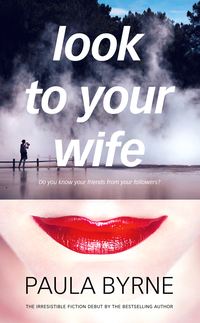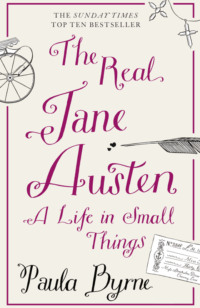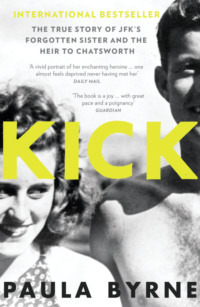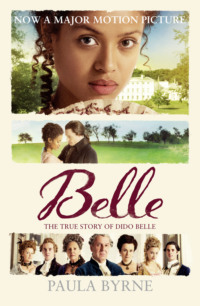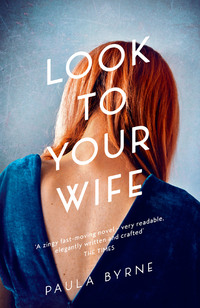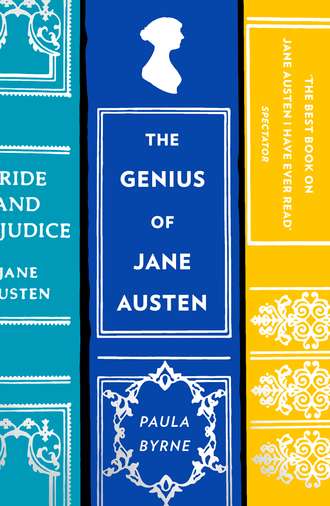
Полная версия
The Genius of Jane Austen: Her Love of Theatre and Why She Is a Hit in Hollywood

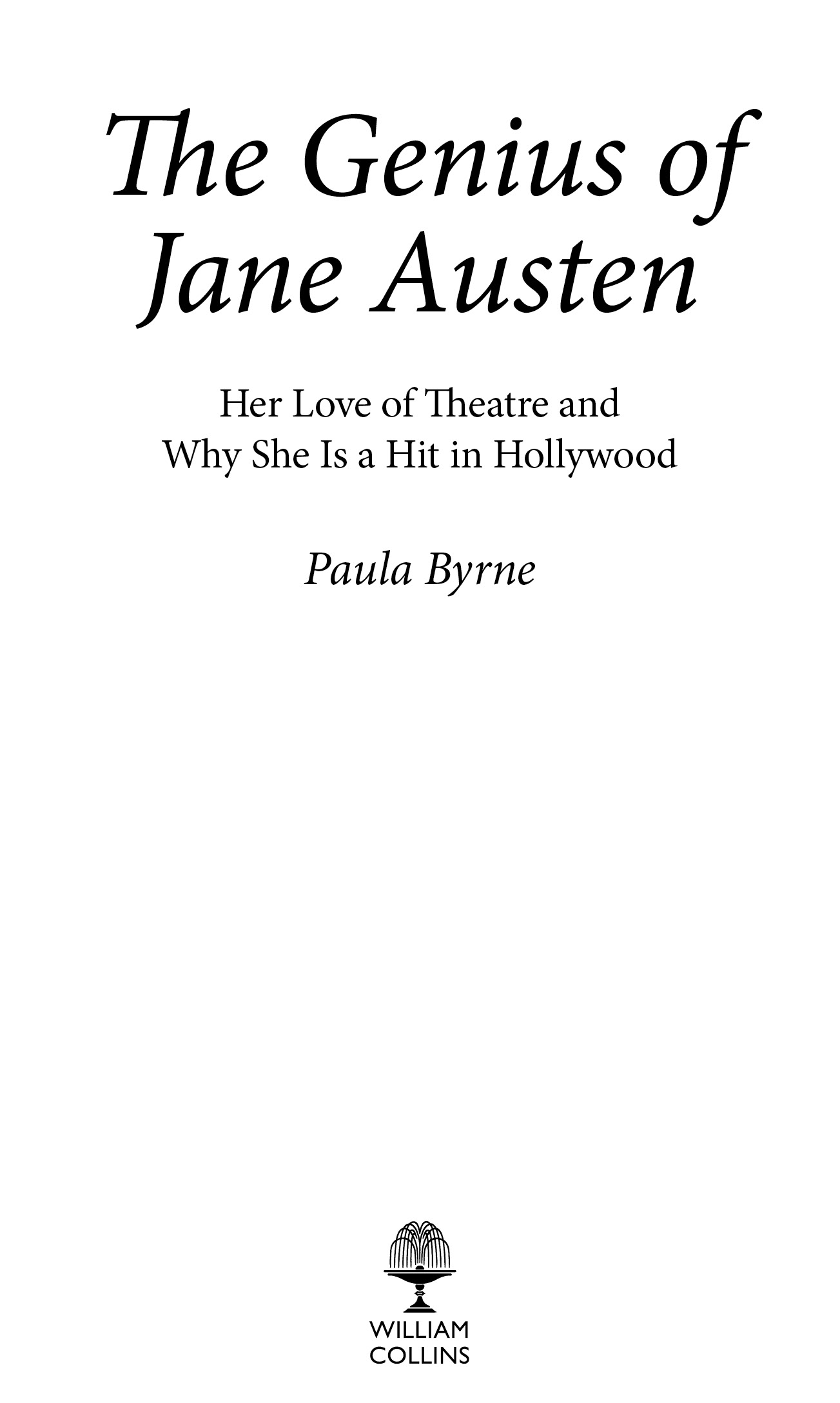
Copyright
William Collins
An imprint of HarperCollinsPublishers
1 London Bridge Street
London SE1 9GF
www.WilliamCollinsBooks.com
This eBook first published in Great Britain by William Collins in 2017
Copyright © Paula Byrne 2002, 2017
Cover design by Heike Schüssler
Paula Byrne asserts the moral right to be identified as the author of this work
A catalogue record for this book is available from the British Library
All rights reserved under International and Pan-American Copyright Conventions. By payment of the required fees, you have been granted the non-exclusive, non-transferable right to access and read the text of this e-book on-screen. No part of this text may be reproduced, transmitted, down-loaded, decompiled, reverse engineered, or stored in or introduced into any information storage and retrieval system, in any form or by any means, whether electronic or mechanical, now known or hereinafter invented, without the express written permission of HarperCollins.
Source ISBN: 9780008225698
Ebook Edition © June 2017 ISBN: 9780008225674
Version: 2018-06-06
Dedication
For Jonathan
Contents
Cover
Title Page
Copyright
Dedication
Foreword to the New Edition
Acknowledgements
Abbreviations
Introduction
Part One: The Novelist and the Theatre
1 Private Theatricals
2 The Professional Theatre
3 Plays and Actors
Part Two: The Theatre and the Novels
4 Early Works
5 From Play to Novel
6 Sense and Sensibility
7 Pride and Prejudice
8 Lovers’ Vows
9 Mansfield Park
10 Emma
11 Why She Is a Hit in Hollywood
List of Illustrations
Picture Section
Notes
Bibliography
Index
Also by Paula Byrne
About the Author
About the Publisher
Foreword to the New Edition
Fifteen years ago, I published Jane Austen and the Theatre, a book whose central argument was that Austen’s comic genius was shaped by her love of theatre. Mansfield Park was the first Austen novel I read, and, like many readers, I was intrigued by the spectacle of the amateur theatricals at the heart of the plot. Stuck in the country and bored to death, the young people decide to stage a play. But, as with Hamlet’s ‘play-within-the-play’, the production is riddled with double meanings, intrigue and alarming consequences.
It seemed to me then, and does so now, that Austen’s play-within-a-novel operates as a wonderful vehicle for exploring illicit flirtations between the young people, especially in the absence of a reliable chaperone. The play Lovers’ Vows works as a meta-text for exploring important relationships between the characters. Edmund Bertram, the pious, shy clergyman, who is in love with a gorgeous, witty femme fatale, Mary Crawford, undertakes to play the part of a pious, shy clergyman who is seduced by a gorgeous, witty femme fatale, played by Mary Crawford. So many plot parallels, intrigues, allusions, moments of drama are contained in the amateur theatricals episode, which dominates the first quarter of the novel.
The play comes to a sticky end, and gives the reader one of the funniest moments in Austen’s canon (and, incidentally, the only moment in Austen without a woman present), when the master of the household, Sir Thomas Bertram, returns from his slave plantations in Antigua to find himself on a stage next to a ranting young actor, who is a complete stranger to him. It’s a beautifully orchestrated, highly comic scene, which humiliates Sir Thomas, giving him grave grounds for concern about the conduct of his children. His revenge is to burn all the unbound copies of the play. But the flirting doesn’t stop.
Nevertheless, I was puzzled by the critical consensus, which, following the influential critic Lionel Trilling, took the view that the Lovers’ Vows debacle meant that Jane Austen morally disapproved of theatre. Because Sir Thomas and the heroine, Fanny Price, disapprove of the play, then this must mean that Austen did too. This made no sense to me in the light of her letters and her other novels, which contain copious allusions to the theatre and to playwrights, from Shakespeare to Sheridan. Jane Austen wrote plays as a child and acted in amateur theatricals at home. She herself was said to be a fine actor, and played the part of Mrs Candour in Sheridan’s The School for Scandal with great aplomb.
Furthermore, it seemed to me that a writer with such comic gifts (often overlooked in the pursuit of the romantic courtship and marriage plot) owed a debt to the plays she watched and read. This book is my attempt to redress that misconception and to examine the roots of Austen’s comic genius. Her love for Shakespeare is well known (she pays tribute to him in Mansfield Park), but she also loved farce and comedies, especially those of now largely forgotten female dramatists, such as Hannah Cowley and Elizabeth Inchbald.
Some years ago, the book went out of print, partly the consequence of being with a small publishing house that no longer exists. Many of my readers have, over the years, expressed interest in the book, which was so generously reviewed. The bicentenary of the death of Jane Austen (2017) seemed to William Collins, the loyal publisher of my five subsequent books, a very good moment to reissue the book, with a new title and new material, as a companion to my full-scale biography The Real Jane Austen: A Life in Small Things.
The extra chapter takes a distinctive look at Austen in Hollywood, exploring a number of stage and film adaptations, from A. A. Milne (creator of Winnie-the-Pooh) to Whit Stillman, who recently adapted the juvenilia for the silver screen. The vogue for stage adaptations of the novels began in the early 1930s, but the explosion of interest in recent years has seen her novels refashioned, reworked and updated on stage, on screen and in the ever-expanding world of the Internet.
Fascination with Jane Austen does not wane. The bicentenary witnesses the appearance of her image on the ten-pound banknote. There are exhibitions about her life and work in Hampshire, where she was born and where she died. But the popular image of her is too often that of a novelist interested only in romance and marriage. Of course marriage is the traditional endpoint of comedy, but what really interested Austen were the misunderstandings and incongruous encounters along the way, not the happy ending. This book is an attempt to place Jane Austen where she properly belongs: alongside Shakespeare as one of the world’s greatest comic writers. It was conceived as a love letter to the comic theatre of the late eighteenth and early nineteenth centuries, which I began to explore twenty years ago during a magical year in the incomparable setting of the Huntington Library in Los Angeles. While I was there, I regularly crossed town to Pasadena, Burbank, Hollywood and Westwood, in order to watch the latest movie releases. Among them were Emma Thompson’s sparkling Sense and Sensibility and Roger Michell’s tender, sombre Persuasion. Then there came a day when my partner said that he was going to take me to a teen movie called Clueless that was set in Beverly Hills. He was a Shakespeare scholar, also researching in the Huntington, so this seemed a very peculiar choice – until five minutes into the film, when I realised what was going on. I leant over and whispered, ‘She’s Emma, isn’t she?’ Since the film did not explicitly acknowledge at any point that it was a reworking of Emma, I think he was rather impressed that I worked it out so quickly. Perhaps that was why, soon after, he asked me to marry him.
As Jane Austen said herself, ‘Let other pens dwell on guilt and misery. I quit such odious subjects as soon as I can.’
Acknowledgements
I am grateful to the Centre for Kentish Studies, Maidstone, for permission to quote from Fanny Knight’s unpublished journals, and the Hampshire Record Office, Winchester, for permission to quote from Eliza de Feuillide’s unpublished letters and James Austen’s prologues and epilogues to the Austen family theatricals.
Abbreviations
SS – Sense and Sensibility (1811)
PP – Pride and Prejudice (1813)
MP – Mansfield Park (1814)
E – Emma (1816)*
NA – Northanger Abbey (1818)
P – Persuasion (1818)
All quotations of the above are from The Novels of Jane Austen, ed. R. W. Chapman, 5 vols (3rd edn, Oxford: Oxford University Press, 1932–34).
MW – Minor Works
Quotations are from The Works of Jane Austen, vi, Minor Works, ed. R. W. Chapman, rev. B. C. Southam (London: Oxford University Press, 1975).
Jane Austen’s Letters, ed. Deirdre Le Faye (3rd edn, Oxford: Oxford University Press, 1995) is cited throughout as Letters.
LV – Lovers’ Vows
Quotations are from Lovers’ Vows: A Play, in Five Acts. Performing at the Theatre Royal, Covent-Garden. From the German of Kotzebue. By Mrs Inchbald. (fifth edn, London, 1798), reprinted in Chapman’s edition of MP.
* Published December 1815.
Introduction
In 1821, four years after the death of Jane Austen, a critic in the Quarterly Review compared her art to Shakespeare’s. ‘Saying as little as possible in her own person and giving a dramatic air to the narrative by introducing frequent conversations’, she created her fictional world ‘with a regard to character hardly exceeded even by Shakespeare himself.’1
In the Victorian era, Austen was dubbed ‘the Prose Shakespeare’.2 George Eliot’s common-law husband, George Henry Lewes, developed the comparison in an influential Blackwood’s Magazine article on ‘The Novels of Jane Austen’:
But instead of description, the common and easy resource of novelists, she has the rare and difficult art of dramatic presentation: instead of telling us what her characters are, and what they feel, she presents the people, and they reveal themselves. In this she has never perhaps been surpassed, not even by Shakespeare himself.3
Yet another nineteenth-century writer, the novelist Thomas Lister, ascribed her genius to revelation of character through dramatic dialogue: ‘She possessed the rare and difficult art of making her readers intimately acquainted with the character of all whom she describes … She scarcely does more than make them act and talk, and we know them directly.’4
Austen herself had a strong sense of the importance of dramatic dialogue in the novel. She and her family, like many others of their class, loved to read aloud together. The Austen women ranked novels according to how well they stood up to repeated group readings. Thus Charlotte Lennox’s The Female Quixote remained a firm favourite (Letters, p. 116), whereas Sarah Burney’s Clarentine failed the test: ‘We are reading Clarentine, & are surprised to find how foolish it is. I remember liking it much less on a 2nd reading than at the 1st & it does not bear a 3rd at all’ (Letters, p. 120).
Jane Austen also had strict notions about how characters in her own novels should be rendered dramatically. To her chagrin, her mother botched the dialogue badly when Pride and Prejudice was read aloud to some friends: ‘Our 2nd evening’s reading to Miss Benn had not pleased me so well, but I beleive [sic] something must be attributed to my Mother’s too rapid way of getting on – & tho’ she perfectly understands the Characters herself, she cannot speak as they ought’ (Letters, p. 203).
Perhaps Austen’s frustration stemmed from her own aptitude for dramatic renditions. Her brother Henry noted her skill in the biographical notice written soon after her death: ‘She read aloud with very great taste and effect. Her own works, probably, were never heard to so much advantage as from her own mouth; for she partook largely in all the best gifts of the comic muse.’5 Her niece Caroline Austen recorded in her Memoir. ‘She was considered to read aloud remarkably well. I did not often hear her but once I knew her take up a volume of Evelina and read a few pages of Mr Smith and the Brangtons and I thought it was like a play.’6
In Mansfield Park, it is typically tongue-in-cheek that Austen endows her villain Henry Crawford with her own gift for reading aloud. Edmund’s commendation of Henry’s reading of Shakespeare, ‘To read him well aloud, is no every-day talent’ (MP, p. 338), is seconded by Lady Bertram’s approving comment, which curiously prefigures Caroline Austen’s: ‘It was really like being at a play’ (MP, p. 338).
Austen’s nineteenth-century critics defined her genius in terms of her dramatic powers. Her great achievement was in character study. As in Shakespeare, the fools are as distinctive and perfectly discriminated as are the heroines, and all the characters reveal themselves, unhampered by an obtrusive authorial presence, through dramatic presentation and conversations – by a kind of ‘dramatic ventriloquism’.7 Yet in the twentieth century there was a common perception that Jane Austen had a deep distrust of the dramatic arts. This was principally due to the notorious amateur theatricals in Mansfield Park: the disruption caused to the household by the performance of Lovers’ Vows during Sir Thomas Bertram’s absence from home was taken as proof of the author’s own distaste for theatre.8
There are, however, a range of judgements upon ‘home representation’ in Mansfield Park, not all of them hostile. It is an error to assume that Fanny Price’s astringent judgement on the theatricals is Austen’s own; after all, Fanny is by no means a disinterested commentator. Unlike her demure creation, who has never seen the inside of a theatre and is manifestly afraid of ‘exposing herself’ on stage, Austen herself was fascinated by professional theatre, visited it frequently, and, far from condemning private theatricals, participated in them herself, both when she was a child and when she was a woman in her thirties. Strikingly, only two years before writing Mansfield Park, she took part in a private performance of perhaps the most popular contemporary play of the Georgian period, Richard Brinsley Sheridan’s The School for Scandal.
Jane Austen’s letters reveal that she was steeped in theatre. As a young woman, she wrote short plays. She copied her brothers in the writing of burlesques in the style of Sheridan and Henry Fielding. She even turned her favourite novel, Samuel Richardson’s Sir Charles Grandison, into a five-act comedy. Her interest in the theatre, both amateur and professional, and her lifelong preoccupation with the drama undoubtedly influenced her mature writing. She lived through a golden age of English stage comedy. Yet critics of Austen have barely touched upon this rich source, save in occasional nods to her extraordinary gift for theatrical dialogue and the creation of sustained comic characterisation.
This book offers the first comprehensive account of Jane Austen’s interest in the theatre, but, more than this, it also suggests that her play-going and her reading of plays were a formative influence on her comic art. Part One of the book reveals her interest in the world of theatre and drama, while Part Two suggests that there is something intrinsically dramatic about her vision of the world in many of her major novels – not only Mansfield Park, but also Sense and Sensibility, Pride and Prejudice and Emma.
I make a number of passing references to Northanger Abbey, in which the heroine, Catherine Morland, resembles the naive ‘country girl’ of the comic tradition in the theatre, but of course the main thrust of this book’s comedy is its parody of the Gothic novel. My argument about the importance of the theatre for Jane Austen is in no respect intended to diminish the importance of her engagement with the traditions of the novel. I draw attention to many neglected theatrical allusions in her work, but there are also many – frequently documented – allusions to eighteenth-century fiction. Indeed, it is an important part of my argument that from Fielding and Richardson through to Austen and her peers, especially Fanny Burney and Elizabeth Inchbald, there was vigorous two-way traffic between the new form of the novel and the ancient art of the drama. It must, however, be acknowledged that, unlike Inchbald and Burney, Austen never expressed the desire actually to write for the public stage.
Although Austen’s final works are less obviously theatrical than her earliest ones – I do not offer a detailed account of Persuasion9 – she participated in private theatricals well into her adult life, as may be seen from some fascinating and little-known passages in the unpublished journals of her niece Fanny Knight. She also took Fanny to the theatre whenever she got the chance. Her periods of residence in London, Bath and Southampton provided ample opportunities for theatre-going with her brood of nieces and nephews. In her letters she recorded her relish for the performances of the renowned tragedian Edmund Kean and the celebrated comic actress Dora Jordan, as well as her particular fondness for Robert Elliston, the star of the Bath Theatre Royal, whose fortunes she followed when he moved to the London stage. Even when in the country, when she was far away from the theatres, she maintained her interest by reading plays, both old and new. She also picked up theatre gossip from the newspapers and would have been able to keep up with reviews of new performances, for this was the age when professional theatre-reviewing grew to maturity.
Twentieth-century criticism was fixated on the assumption that Jane Austen was immovably attached to village life and deeply suspicious of urban pleasures – the theatre foremost among these.10 This book presents quite another picture: an Austen who enjoyed urban life, who attended the theatre whenever she could, and who took enormous pleasure in the theatrical scene. A recovery of the theatrical Austen makes it difficult to persist in regarding her as a supremely parochial novelist, much less as an isolated, defensive, class-bound or reactionary one.
The first part of the book establishes Jane Austen’s knowledge of the world of the theatre. The second part explores how that knowledge shaped her own art. It demonstrates how she makes allusions that assume considerable theatrical knowledge – of a kind now lost to us – on the part of her first readers. And it examines the ways in which the novels adapt a wide range of techniques from the stage tradition, including dramatic entrances and exits, comic misunderstandings, ironic reversals and tableaux.
A particularly important device is what I call the ‘set-piece’: chapters or episodes framed as set-pieces are often analogous in shape and length to a scene in a play. It is helpful here to cite a comment of Henry James, another nineteenth-century novelist much interested in scenic construction – and indeed in the writing of plays. His novel The Awkward Age was organised entirely on scenic principles. In his author’s preface, James pictured each of his episodes as a lamp:
Each of my ‘lamps’ would be the light of a single ‘social occasion’ in the history and intercourse of the characters concerned, and would bring out to the full the latent colour of the scene in question and cause it to illustrate, to the last drop, its bearing on my theme. I revelled in this notion of the occasion as a thing by itself, really and completely a scenic thing.11
The building bricks of Austen’s novels were also dramatic scenes. This is one reason why they adapt so well to film representation.
We naturally think of Jane Austen as a pioneer of the nineteenth-century realist novel. But she also lived through a great age of English stage comedy. The aim of this book is to restore her to the company of such admired contemporaries as Richard Brinsley Sheridan and Hannah Cowley, while also setting her in the great tradition of English drama that stems from Shakespeare.
PART ONE
The Novelist and the Theatre
A love of the theatre is so general …
Mansfield Park
1
Private Theatricals
The fashion for private theatricals that obsessed genteel British society from the 1770s until the first part of the nineteenth century is immortalised in Mansfield Park. The itch to act was widespread, ranging from fashionable aristocratic circles to the professional middle classes and minor gentry, from children’s and apprentices’s theatricals to military and naval amateur dramatics.1
Makeshift theatres mushroomed all over England, from drawing rooms to domestic outbuildings. At the more extreme end of the theatrical craze, members of the gentrified classes and the aristocracy built their own scaled-down imitations of the London playhouses. The most famous was that erected in the late 1770s at Wargrave in Berkshire by the spendthrift Earl of Barrymore, at a reputed cost of £60,000. Barrymore’s elaborate private theatre was modelled on Vanbrugh’s King’s Theatre in the Haymarket. It supposedly seated seven hundred.2
Private theatricals performed by the fashionable elite drew much public interest, and had profound implications for the public theatres.3 On one occasion in 1787 a motion in the House of Commons was deferred because too many parliamentarians were in attendance at a private performance of Arthur Murphy’s The Way to Keep Him at Richmond House.4 Such private performances often drew more attention in the newspapers than the theatres licensed for public performance.
From an early age Jane Austen showed her own mocking awareness of what the newspapers dubbed ‘the Theatrical Ton’. In a sketch called ‘The Three Sisters’, dating from around 1792, she portrayed a greedy, self-seeking young woman who demands a purpose-built private theatre as part of her marriage settlement (MW, p. 65). In Mansfield Park, the public interest in aristocratic private theatricals is regarded ironically: ‘To be so near happiness, so near fame, so near the long paragraph in praise of the private theatricals at Ecclesford, the seat of the Right Hon. Lord Ravenshaw, in Cornwall, which would of course have immortalised the whole party for at least a twelve-month!’ (MP, p. 121). Austen carefully distinguishes between the fashionable elitist theatricals of the aristocracy, of the kind that were mercilessly lampooned by the newspapers, and those of the squirearchy.5 While Mr Yates boasts that Lord Ravenshaw’s private theatre has been built on a grand and lavish scale, in keeping with aristocratic pretensions, Edmund Bertram shows his contempt for what he considers to be the latest fad of the nobility:


